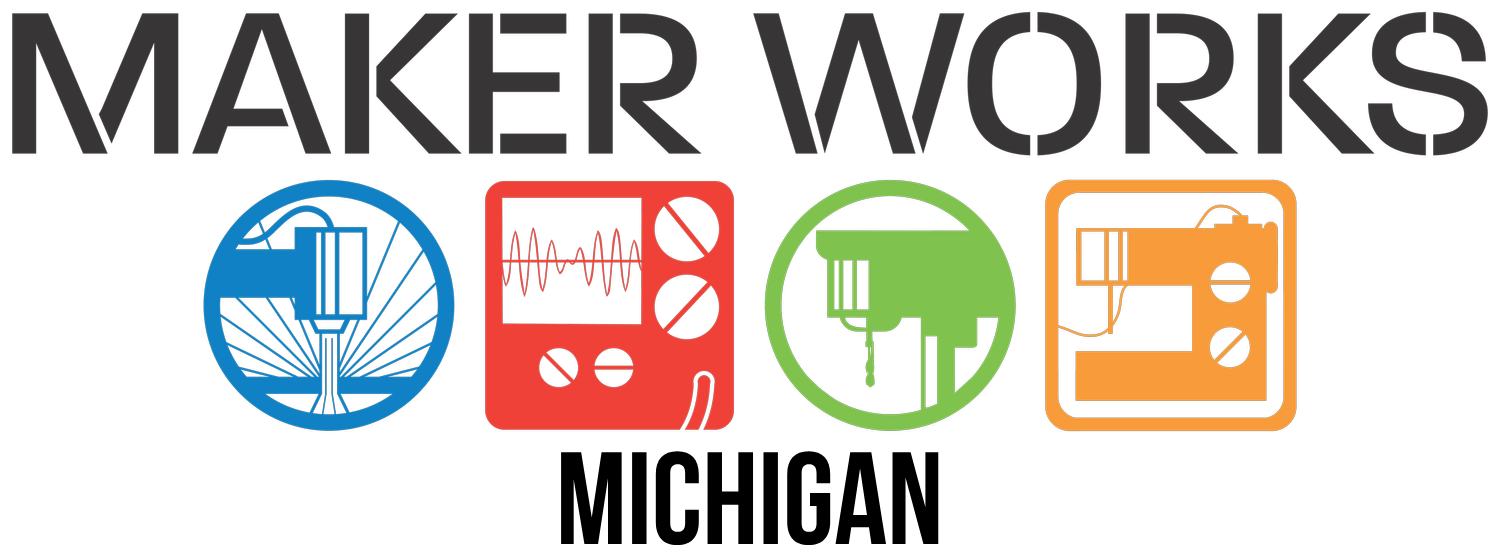Lost-Wax Centrifugal Casting
tool training
Location: Ann Arbor, MI
Duration: 2.5 hours
Class Size: 3 people
Price: $90
Ages: 16+ (13-15 with guardian)
Lost-wax casting has been used for hundreds of years and is still the way most pieces of cast jewelry are created, including rings. Combined with centrifugal casting, lost-wax creates detailed castings in pewter, silver, and other metals using wax models. In this class, you’ll learn how to create a wax model, invest a flask, and centrifugal cast. Includes kiln checkout.
People ages 13-15 may take this tool checkout class with their parent/guardian (both adult and minor must register and pay). A parent/guardian who has taken the checkout class must also accompany them when operating the tool. Ages 16 and up are encouraged to take checkout classes in any area they wish, with parent/guardian approval.
More Details
Anvil carved out of machinable wax on the Emco F1 CNC milling machine in Jewelry.
How does it work? You start with a model of the object you want, usually in some form of wax. There are hard waxes that are great for carving, and soft waxes you can shape by hand. Machinable wax can be machined on our CNC mill, as was done with the tiny anvil carved out of wax in the photo, but you could also use our Foredom rotary tool with various burrs, or hand tools.
T-Rex skull 3D printed in PLA on our Rostock 3D printer.
However–and this is very cool–you can also use some objects from nature, such as twigs or pine cones, or even a 3D printed model (in PLA or wax). As you’ll see, the key is that the model will burn completely away with minimal ash. In the photo a T-Rex skull printed in PLA on our Rostock 3D printer is prepared for investment. (ABS plastic is not as good choice.)
The model is attached to a thick stick of wax, often with smaller branches connected to other parts of the model. (See the red and blue wax sticks in the T-Rex photo.)
Pouring investment to cover the wax model.
Now the model is placed in a cylinder and the cylinder filled with a special high-temperature plaster called investment. This is allowed to solidify.
This cylinder (called a flask) is heated carefully in a special kiln over the course of 10 hours or more until it reaches 1350 degrees F! Besides curing the investment, the model and wax sticks are burned out, leaving a cavity that is exactly the model you created. (By the way, Maker Works will normally do this “burnout” for you, so you don’t need to stick around for 10 hours!)
Heating up pewter in the crucible, before releasing the casting machine to spin the metal into the mold.
Just pouring hot metal into the mold might not capture all the detail–instead the metal is put into the mold under pressure. We use a centrifugal caster, which spins a crucible (where the metal is melted) and the mold around at high speed, slinging the metal into the mold. (The casting machine is inside a safety enclosure.)
The T-Rex skull, in pewter, emerging as the investment is gently removed. It’s an archeological dig!
After a quick dunking of the flask to cool it off, you can remove the investment to reveal the cast metal object!
A pewter T-Rex skull. Every flaw–that is, detail–was captured faithfully.
Notice the level of detail captured–the original 3D printed model had layer lines. Clearly, it pays to clean up your model before casting.
Maker Works stocks all the material and has most all the tools you need–waxes, investment, flasks, vacuum chamber, kiln, centrifugal caster, mixer, scales, etc. We even stock “R98” pewter, if you prefer to experiment with pewter before moving on to other casting metals. We’ll cast our example using pewter in the class since it is one of the fastest and easiest metals to cast.
While not required to take the class, you must take either the (free) 1-on-1 propane torch checkout, or the Jewelry Torches (combined oxy-acetylene & propane torches) class to eventually use the centrifugal caster on your own. Propane will be sufficient for pewter casting; higher-temperature jewelry metals may require the oxy-acetylene torch for melting.
Curious about jewelry metalworking and casting? We highly recommend the following books by Tim McCreight: The Complete Metalsmith, and Practical Casting. Be sure to check out Rio Grande Jewelry Supply. Their Tools and Equipment catalog is excellent.

